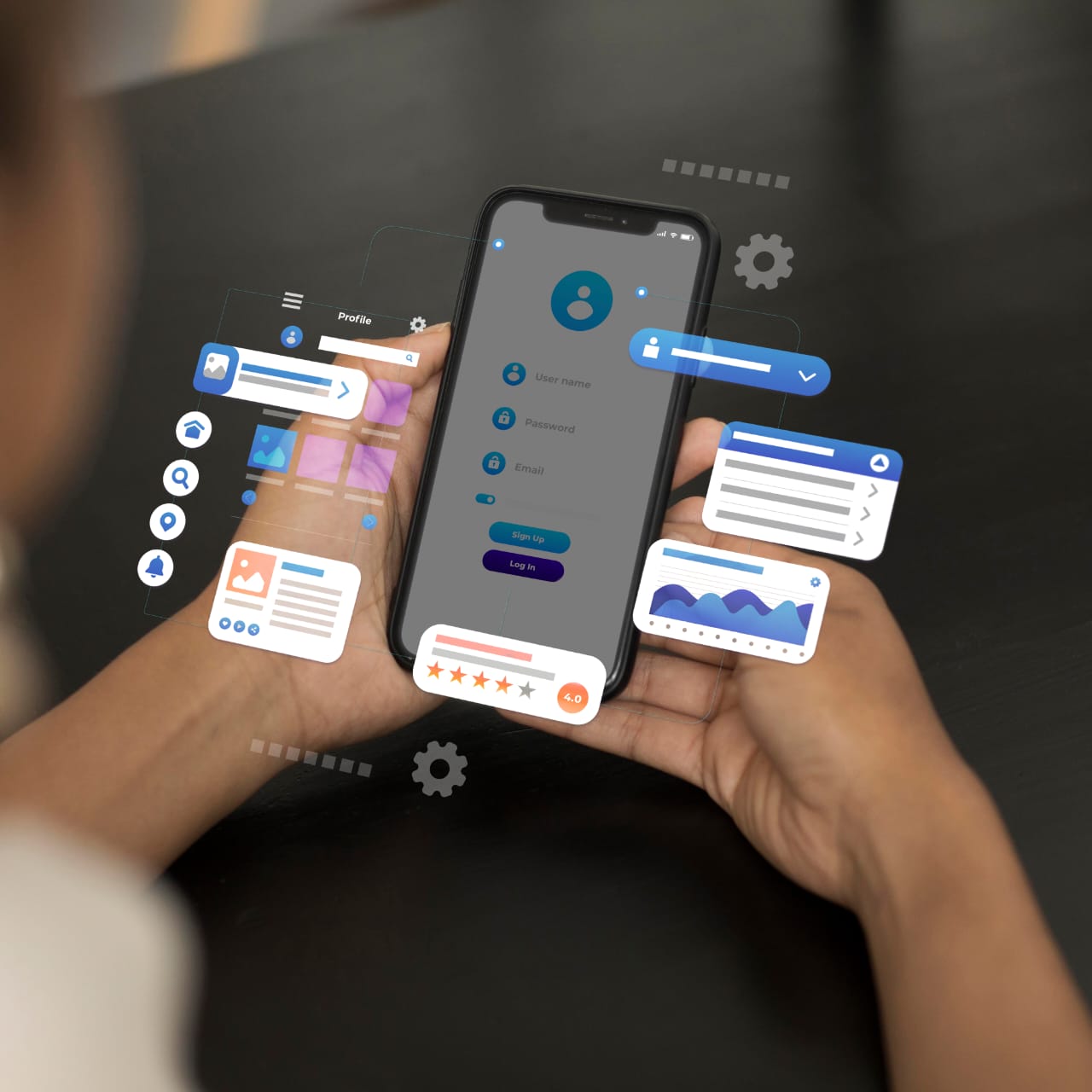There are many different features available for modern handheld devices. Of those features, some are already included with the device, while others may be part of the plans offered through a carrier. About features, it is helpful to realize that, although they are ever so greatly reliant on the inherent capabilities of the phone, they are also different through a mobile carrier. And sometimes, the same model phone will be produced in different variants by manufacturers and released to competing carriers. Of course, all this can make things very confusing to consumers where the same smart phone with a 2.0 megapixel camera is marketed by one carrier but only has a 1.3 megapixel camera for another. Similarly, a cell phone may claim to be able to operate with a 3G network, but customers frequently discover that only one provider in the area actually supports that capability. In turn, the consumer’s desired carrier may offer a music package, but it is only available on some of the devices offered by the carrier. Adding to the confusion, it’s also possible to buy from online retailers an “unlocked” phone that is not tied down to any particular carrier. Buying a mobile device with such a complex array of choices and options takes at least a little bit of skillful research and quite a bit of patience, but the task can be accomplished.
Features of Mobile Phones
Most makers of mobile phones offer a “compare” feature on their Web sites. This enables the consumer to create comparison matrices of different phones or even of different configurations of the same phone. Consumers are likely to research not only the capabilities of a mobile phone but also a carrier’s packaged plans before making a purchase. Knowing what types of features exist can help be a useful jumping off point. Informed shoppers will have a list of must-haves or “requirements” for a new device to narrow in on the selection process. Beyond that, here are a few examples to give an idea of just how many features exist in the market today. We will touch on many of these in greater detail later in the next chapter, which describes what you can do with the mobile Web.
- Bluetooth—Cell phones and PDAs come equipped with Bluetooth Wireless technology, which enables them to communicate with any accessory that has a micro-phone/ ear-piece set, such as a head-set, up to a range of 10 meters even if it is not contiguous from one location to another or even out of line of sight.
- Camera—Digital cameras in many of the new cell phones range from 1.3 to 5.0 megapixels and will take high-definition photos. Many of these machines are also camcorders, enabling video recording.
- Desktop sync- This is a functionality that enables a mobile device to be connected with a PC or laptop computer. Software is free from the mobile carrier for installation on the computer, which will then be able to interact with the mobile device for adding and deleting programs and transferring ringtones, music, photos, and video files to and from the phone.
- Downloadable content—Many phones can download mobile games, third-party ringtones, wallpaper graphics, and applications. The carrier can have them available in stores, they can be surfing the mobile web, or transferred directly from the owner’s PC, thereby offering users multiple convenient options to gain access and install these on their devices.
- E-mail—The mobile e-mail feature available on today’s handhelds can mean very different things depending upon the provider and the type of phone.
E-mail– enabled phones may only provide the user with links to the Internet to Web-based e-mail providers like Yahoo! and Hotmail. Such features mean access to getting on to mobile Internet in order to use e-mail. Other phones provide several “push” e-mail that sends e-mail messages directly to the phone and alerts the owner that they have new messages. And “hybrid” e-mail services are provided that deliver new-message notifications but insist that users access the Web in order to retrieve their e-mail. - Games –Most available handhelds today include games for their customers, and many phones come equipped with multiple of these on-the-go entertainment options preloaded and ready at the time of sale. Many carriers also let game enthusiasts browse and download additional, new entertainment options via 1-click mobility retailers.
- GPS (global positioning system): An enabled phone with GPS will be able to use the global navigational satellite system to always identify its location. The user will then be able to use applications like mapping and navigating software with turn-by-turn directions, emergency locater services, and location-aware social networks.
- IM—Cell phones with instant-messaging capabilities let owners exchange real-time text messages with their IM buddies using a resident application instead of opening a Web browser. In addition, today not all instant-messaging clients are enabled for mobile IM, but AIM, Yahoo!, and Windows Live messengers all have broad support. Owners may have to acquire these applications on their own.
- Live TV-Almost all providers carry the ability for viewers to watch live, full-length television programs on their cell phones. It also carries a program guide with scheduling, and numerous providers let users sign up for reminder alerts for specific shows. Good to know is that different providers, and even various plans, have different lineups of channels.
- Phones with memory card slots therefore imply user convenience whereby one can expand the memory of his or her device by simply including an add-on removable flash memory card. For instance, one can include microSD in order to have more expansible storage for his or her phone. This makes it possible to increase more storage for photos, videos, apps, and files without being too dependent on the internal memory; hence, it works well for those users who require extra storage space or separate data management.
- Mobile office applications—Software like Microsoft Word, Excel, and PowerPoint can be found on most smartphone devices.
- Music-Many of these cell phones have music capabilities. They actually come pre-packaged with built-in MP3 players. The users can listen to radio channels and download songs through carrier portals. Others permit the users to listen to music through media players like Windows Media Player or iTunes and transfer songs from the PC into their mobile devices.
- Phone as a modem-For all those who know, smartphones don’t lose their connectivity to the Internet ever. Hence, most of them can be a modem for a laptop computer so they can provide high-speed internet access to travelers or others with no network access.
- Picture and video multimedia messaging—Like texting, this relatively new functionality allows some handsets to send photos and video files instantly to contacts nationwide.
- Productivity tools—Organization and productivity tools, such as planners and schedulers, task lists, memo pads, alarm clocks, and calculators, are often included on many smartphones available today.
- Quad band-This is where the mobile supports four cellular frequency bands and will work in any country. Phones that accept this have been referred to as “global” or “world” phones.
- QWERTY keyboard-This feature means the phone body houses a full English language keyboard. The term QWERTY derives its name from the top-left letters of the keyboard with which it starts.
- SMS text messaging—This feature enables owners of phones to instantaneously send and receive short text messages to and from other wireless users.
- Speakerphone—This is the hands-free option, which allows talkers to take part in a conversation while still doing other things. This sort of feature is generally incorporated into the device rather than being a service. Video-Video play on camera phones with camcorders is quite a feature. However, there are also phones that will show cellular video clips with music videos, movie and DVD trailers, short TV episodes, sports clips, and weather reports. Users of media players in devices can also transfer video files from their desktop computers for viewing on their phones.
- Voice dialing—Voice dialing will give users the choice of having voice-activated dialing. Users will be able to speak the name of the person they are trying to reach, and the application will automatically call that number. Device owners need to undergo a procedure that furnishes the application with voice samples and patterns.
- Web-enabled—Most mobile devices that are on sale today have Internet access, but the experiences can vary greatly. Camera phones, in particular, as well as other multimedia phones that have Web access will most often include a carrier-specific interface that will have a numbered list of options to let users view Web-based information such as news, e-mail, sports, search, etc. This makes it very difficult, and sometimes impossible, to browse to particular Web sites. Smartphones, PDAs, and other mobile devices which do have their own operating systems will likely come pre-configured with HTML Web browsers with address bars where one types in the URLs. Mobile phones are now carried with high-speed Internet connections through various cellular technologies and standards, providing data transmission speeds that differ. The usage of theses technologies varies between the carriers and various phone models but the latest quality standard is the 3G broadband network connection, which indicates the third generation in mobile phone technology.
Data Plans
In addition to voice, feature, and data plans are those that are offered by mobile phone carriers for consumers to choose from. Many of the features listed above, including live TV, are contingent on users activating packages the carrier markets. However, for a variety of users who want to have access to the mobile Web and email regularly, for example, data plans abound that provide owners of a device with allocations of monthly bandwidth use. The most attractive of these bundles is the data plan that is unlimited, and basically every carrier offers this, starting at around $15 per month. With an unlimited data plan in place, phone owners can use the Web to their heart’s content, without having to worry about usage at the end of the month. It’s especially handy for those involved in activities that are higher bandwidths, such as downloading videos. One thing you can’t determine from the plan summaries is whether text messaging is included in the plans or not.
Texting, which is becoming increasingly popular, costs senders and receivers up to $.20 per message unless coverage is included in the plans. Messaging packages could be added to a shopper’s plan for as little as an additional $5 per month and would be highly recommended for anyone who had any intention of getting started texting. To access the mobile web, it does not necessarily have to be accessed on cell phones; other devices include tablets, smartwatches, e-readers, laptops, portable gaming consoles, wearable fitness trackers, smart glasses, portable media players, and even Internet of Things devices like smart home controllers and connected cameras.
One of the better-looking and feature-rich alternatives to the iPhone itself is the iPod Touch. The iPod Touch looks like and does almost everything that the iPhone can do, but it can’t make or take calls since it isn’t a phone.
Capacities up to 32GB, runs on the same iPhone operating system, and is nearly as free from firmware or application restrictions as its sister. The Touch does not feature an integrated camera, Bluetooth, cellular service and EDGE technology, and it uses WiFi connectivity to access the Internet. Other devices such as the HP iPAQ series are a kind of device that does not integrate a phone or cellular capabilities but offers access to the Internet and computing power. Such devices can be categorized as Pocket PCs, PDAs, or just handhelds/Internet devices, and they are offered by manufacturers such as Dell, Hewlett-Packard, Nokia, HTC, among others. Computer laptops are getting ever smaller, as the demand for portability is rising. More people want to buy them, and new Ultra Mobile PCs are barely larger than a paperback book, with screen displays measuring from 4 to 7 inches.
And just a little bit bigger subnotebooks weigh nearly 2 pounds. Owners of Amazon’s Kindle e-book readers can surf the Web besides carrying their e-books, blogs, and newspapers with them anywhere they go. A few handheld game systems, including Sony PSP and Nintendo DS, even allow surfing the mobile Web. Although unavailable to access, the Apple iPod can download and store considerable amounts of information from the Web, such as podcasts, videos, audio files, and so on, to carry around and is a device to look at when creating mobile content.
Read Also:
- Introduction To Mobile Phones
- Samsung Smart Phones
- Concept and History of Mobile Phones
- 37 Positive and Negative Sides of Mobile Phones
- 24 Effects Of Mobile Phones On Children








Leave a Reply